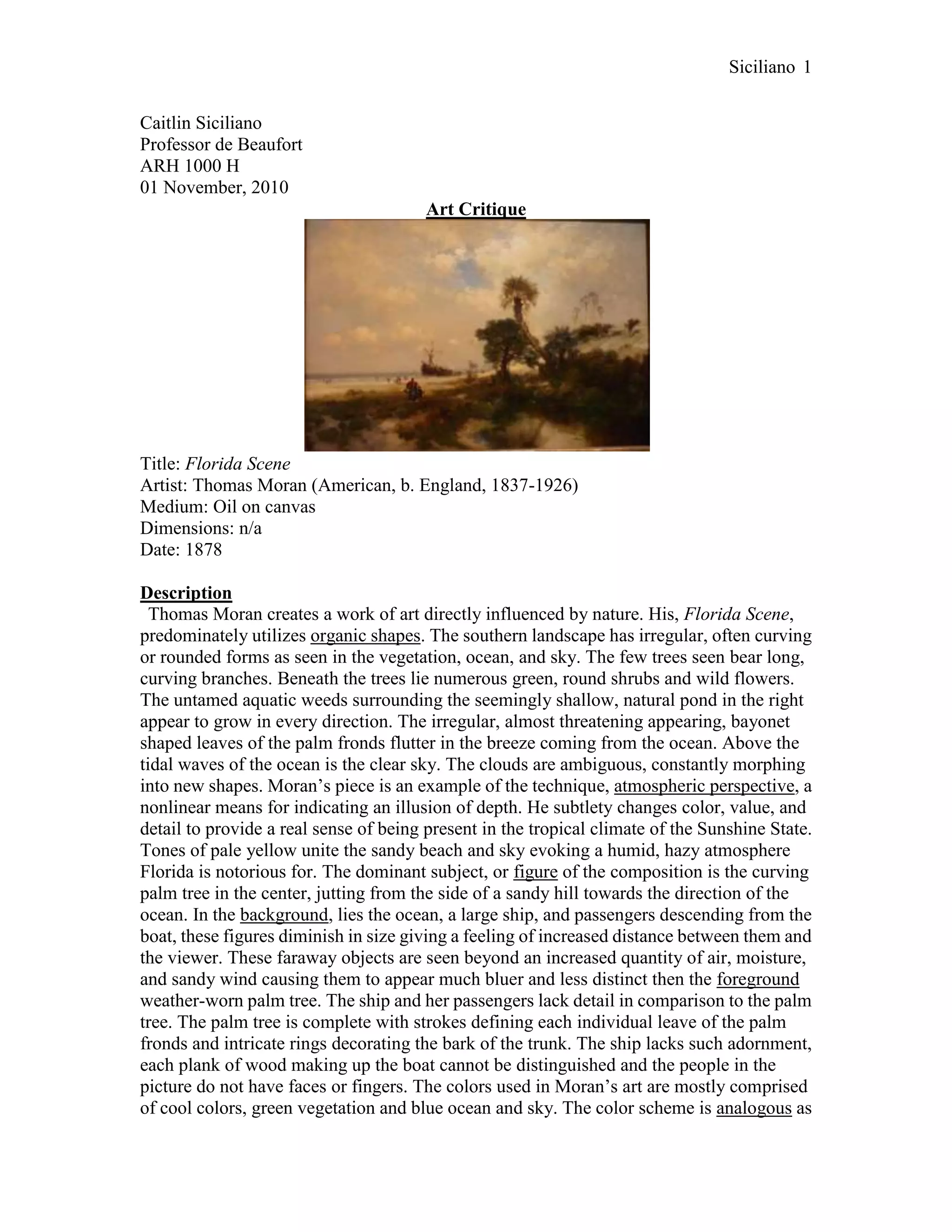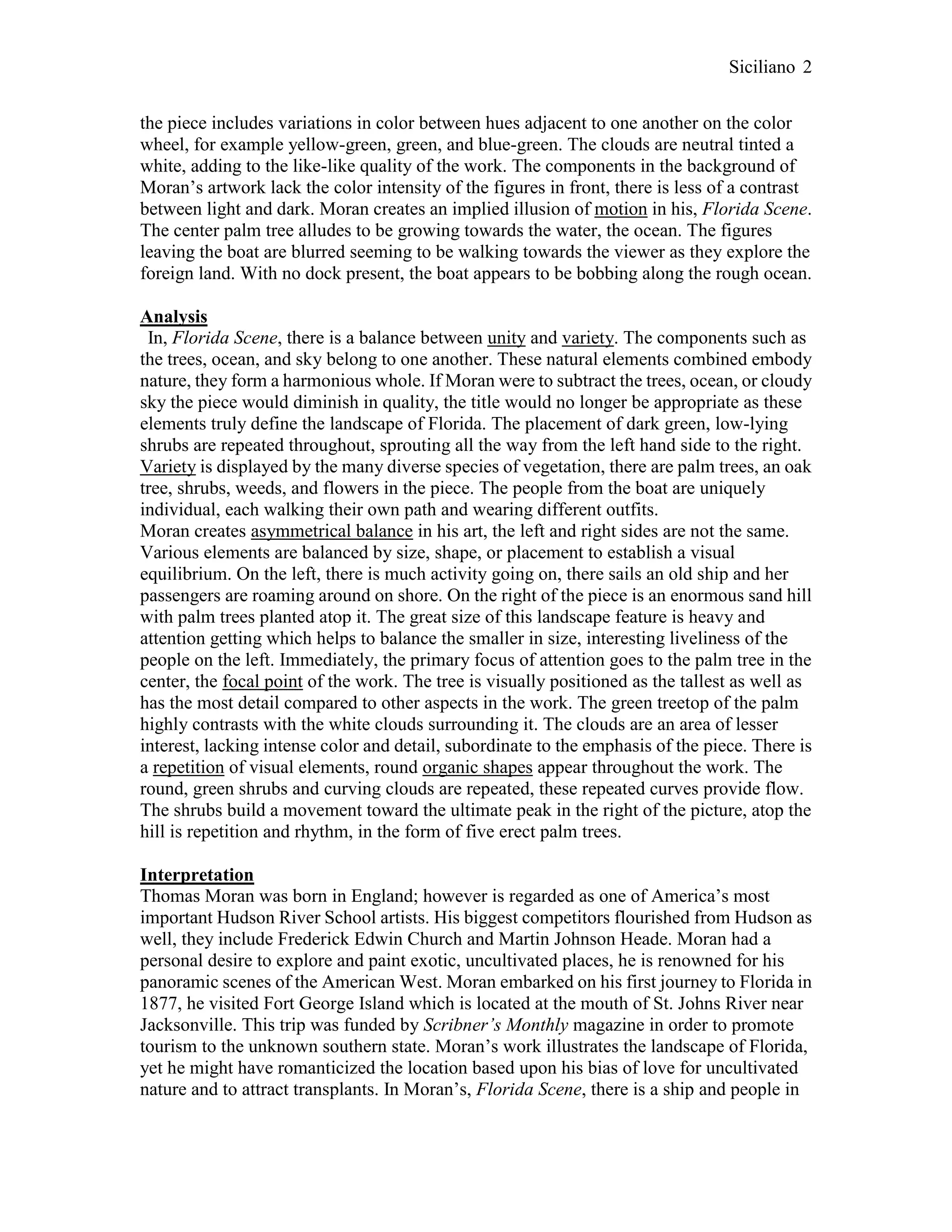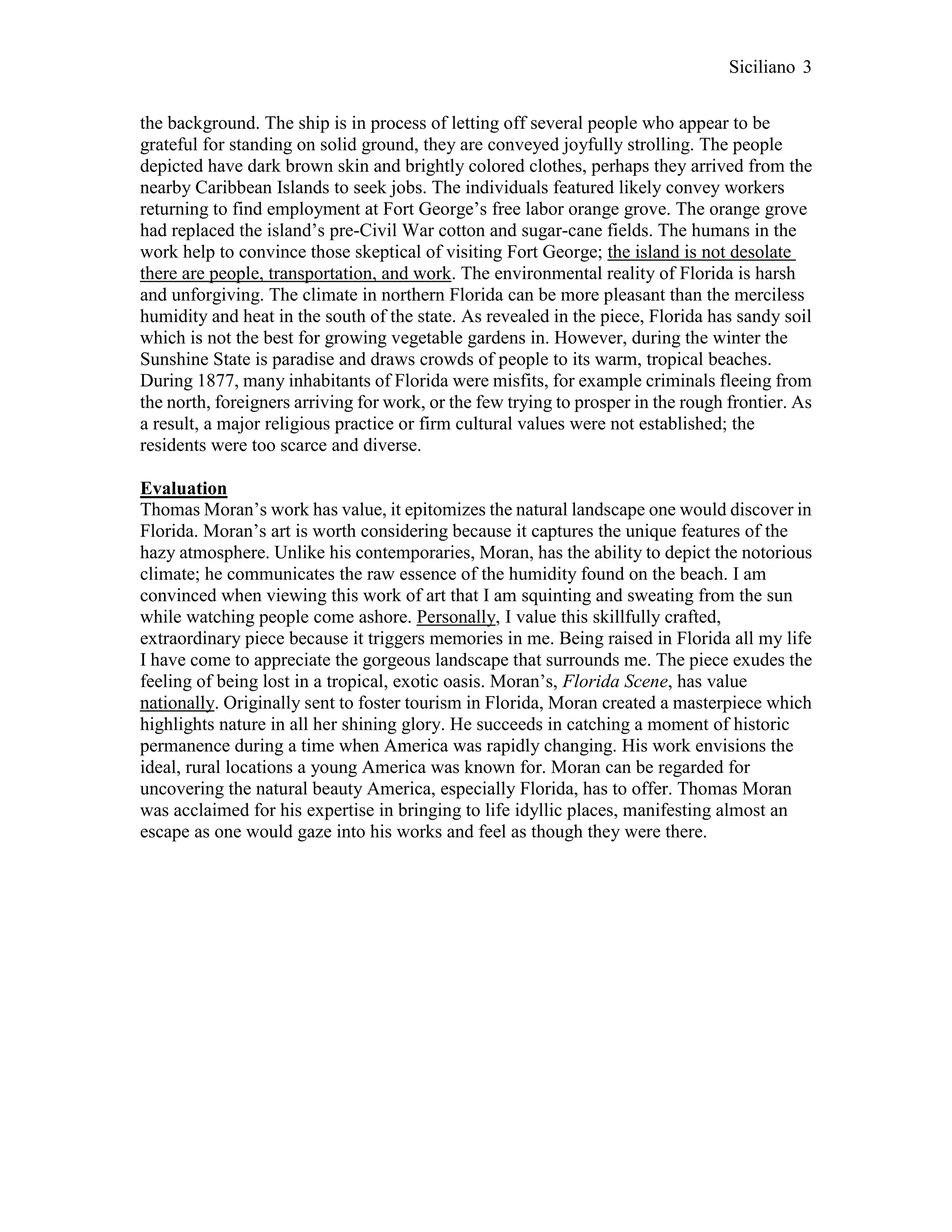Thomas Moran's 1878 oil painting "Florida Scene" depicts the landscape of northern Florida, capturing the hazy atmosphere and unique climate of the region. The painting shows various tropical vegetation like palm trees, shrubs, and wildflowers, as well as the ocean and sky. In the background, a ship is shown letting off passengers who are walking along the beach. Moran aimed to promote tourism to Florida through romanticizing its natural beauty and highlighting the opportunities for work on the undeveloped frontier. The painting provides valuable documentation of Florida's landscape and climate in the late 19th century.


